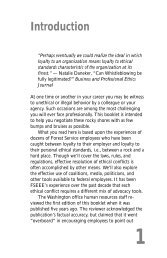Annual Report - Forest Service Employees for Environmental Ethics
Annual Report - Forest Service Employees for Environmental Ethics
Annual Report - Forest Service Employees for Environmental Ethics
Create successful ePaper yourself
Turn your PDF publications into a flip-book with our unique Google optimized e-Paper software.
prevailed, <strong>for</strong> the second time, in the only lawsuit in history<br />
aimed at controlling firefighting costs and re<strong>for</strong>ming wildland<br />
firefighting.<br />
In this second round be<strong>for</strong>e Montana Federal District<br />
Court Judge Donald Molloy, FSEEE challenged the <strong>Forest</strong><br />
<strong>Service</strong>’s decision that toxic chemical aerial fire retardant had<br />
no significant environmental effects. We also argued that<br />
the Fish and Wildlife <strong>Service</strong> and National Marine Fisheries<br />
<strong>Service</strong> had failed to properly assess fire retardant’s effects on<br />
threatened and endangered fish, wildlife and plant species.<br />
In a sweeping 79-page ruling, Judge Molloy agreed that<br />
the <strong>Forest</strong> <strong>Service</strong> must assess fire retardant’s environmental<br />
risks in a full environmental impact statement. The wildlife<br />
and fish agencies must also assess retardant’s effects on species’<br />
critical habitat and they must set a ceiling on how many<br />
of each threatened or endangered species can be harmed by<br />
retardant.<br />
The <strong>Forest</strong> <strong>Service</strong> has not yet determined the effects of aerial<br />
fire retardant on threatened and endangered species.<br />
Keri Brown, BLM<br />
2010 <strong>Annual</strong> <strong>Report</strong> • 9




